HAPPY HOLIDAYS from NanoBCA and WIAF!
Posted on December 22nd, 2025 in Uncategorized | No Comments »
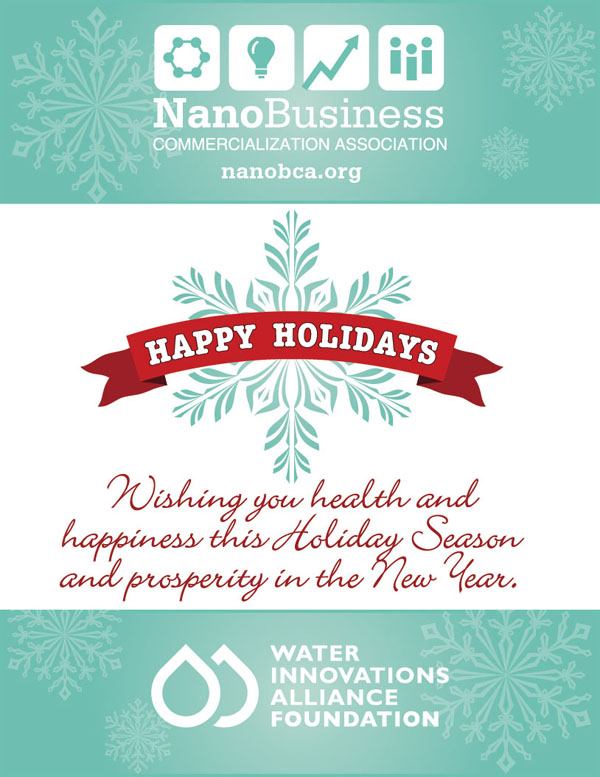

On December 6, 2025 I was honored with an Award by the FBI New Haven Citizens Academy Alumni Association (FBINHCAAA) for my Service to our Connecticut Community. I thank my colleagues and I have enjoyed working with our team serving Connecticut and America.
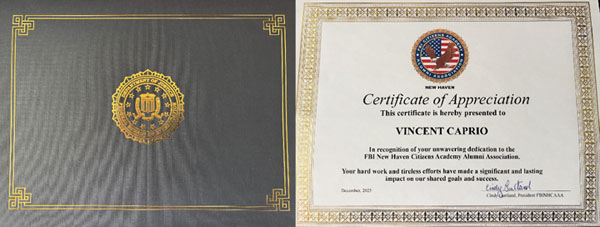
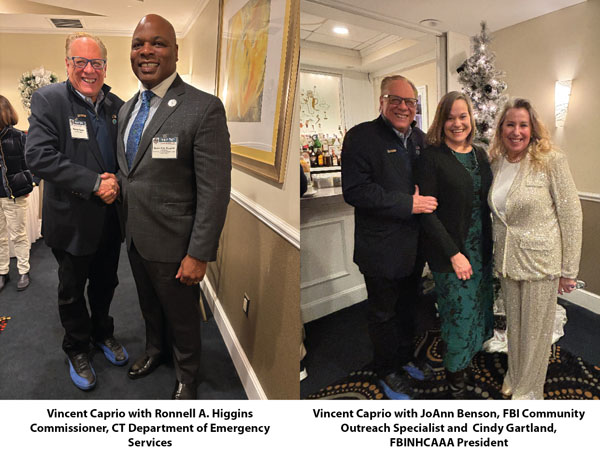
NanoBCA/WIAF Webinar
Wednesday, December 10, 2025
2PM ET
AGENDA
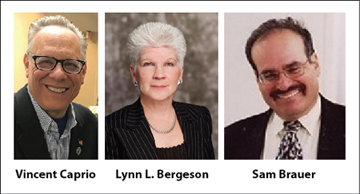
2:00-2:10 Opening Remarks
Vincent Caprio
Executive Director
NanoBusiness Commercialization Association (NanoBCA)
vincentcaprio@nynanobusiness.org
National Debt $38 TRILLION U.S. Debt Clock
Launching the Genesis Mission
The White House
Treasury Confirms Spending Up $142 Billion in 2025
Committee for a Responsible Federal Budget
To reform and protect Social Security, let’s start by appointing public trustees
The Hill
EPA asks court to overturn Biden-era limits on deadly soot pollution
The Hill
————————————————————
2:10-2:25 EHS Update
Lynn L. Bergeson
Managing Director
Bergeson & Campbell, P.C.
NanoBCA EHS Chair
lbergeson@lawbc.com
UK NanoSafety Group Publishes Updated Guidance on Working Safely with Nanomaterials
EVENTS/WEBINARS
HCPA 2025 Annual Meeting
December 7-10, 2025
Fort Lauderdale, FL
TSCA Developments 2026
February 5, 2026
via webinar
————————————————————
2:25-2:50 Genesis Mission Overview
Sam Brauer, PhD
Founder & Principal
Nanotech Plus
sbrauer@nano-biz.com
Energy Department Launches ‘Genesis Mission’ to Transform American Science and Innovation Through the AI Computing Revolution
U.S. Department of Energy
Trump signs executive order launching Genesis Mission AI project
NBC News
————————————————————
2:50-3:00 Q&A
————————————————————
3:00 Conclusion
————————————————————
Our monthly webinars address topics involving the relationship between the science of nanotechnology and Environmental, Health & Safety (EHS), US Legislation, Education, Finance, Manufacturing and Foreign Policy. One of the benefits of NanoBCA membership is access to our previous webinars with America’s leading scientists and engineers.
NanoBCA/WIAF Webinar
Wednesday, November 19, 2025
2PM ET
Today we will be having our NanoBusiness Commercialization Association (NanoBCA)/WIAF webinar. We are honored to have Ed Youdell, President & CEO of Fabricators & Manufacturers Association, International (FMA), one of America’s leading authorities on Manufacturing, presenting on this month’s webinar. Ed will be discussing the State of American Manufacturing.
Joining Ed is Omar Nashashibi and Dr. Chris Kuehl. Omar is the Fabricators and Manufacturers Association’s political insider and founder of Inside Beltway. Chris is the Managing Director of Armada Corporate Intelligence.
————————————————————
AGENDA

2:00-2:05 Opening Remarks
Vincent Caprio
Executive Director
NanoBusiness Commercialization Association (NanoBCA)
vincentcaprio@nynanobusiness.org
National Debt $38 TRILLION U.S. Debt Clock
————————————————————
2:05-2:20 EHS Update: The New Mexico PFAS Proposal
Carla N. Hutton
Regulatory Analyst
Bergeson & Campbell, P.C.
chutton@lawbc.com
PEER Files IQA Request to Correct EPA Claim That PFOA Has Been Phased Out
EC Begins a Public Consultation to Collect Evidence on Upcoming Advanced Materials Act
Shutdown Stalemate: How EPA’s Pause Could Reshape Chemical Regulatory Timelines
The Supreme Court’s Tariff Case and Its Ripple Effects for Chemical Regulation
EVENTS/WEBINARS
PFAS in Consumer Products: Navigating Multi-State Compliance and Regulatory Strategy Webinar
December 2, 2025
11:00am-12:00pm ET
31st Annual Green Chemistry Challenge Awards: New Categories and Expanded Opportunities Webinar
December 4, 2025
11:00am-12:00pm ET
————————————————————
2:20-2:45 State of Manufacturing in America: The Effect of Tariffs
Ed Youdell
President & CEO
Fabricators & Manufacturers Association, International (FMA)
eyoudell@fmamfg.org
Omar Nashashibi
Founder
Inside Beltway
omar@insidebeltway.com
Having worked in the Nation’s capital for more than 25 years, Omar helps fabricators and manufacturers keep a pulse on the policies and regulations that will impact them by providing original content and regularly speaking at FMA events.
Around Washington® is an e-newsletter authored by Omar Nashashibi founder of Inside Beltway, that provides members with twice-monthly insights on issues affecting U.S. manufacturers, particularly trade, tariffs, taxes, workplace regulations, and workforce development. It covers the latest happenings from Washington D.C. in a straightforward, nonpartisan manner.
Dr. Chris Kuehl
Managing Director
Armada Corporate Intelligence
exec@armadaci.com
Armada’s mission is to combine the traditions of corporate and competitive intelligence with strategic and tactical planning to provide clients with a clear view of the world they exist in and what they can do to advance their goals. Major clients include YRC Freight, TranSystems, Kansas City Southern Railroad, C-Biz, and others. Chris Kuehl serves as economic analyst for the Fabricators & Manufacturers Association International® (FMA). One of his major roles at FMA is writing an economic e-newsletter titled Fabrinomics®, specifically designed to aid business decision-making by management and shop owners in the metal forming and fabricating industry. Chris also conducts workshops for FMA at major conferences and trade shows.
————————————————————
2:45-3:00 Q&A
————————————————————
3:00 Conclusion
————————————————————
Our monthly webinars address topics involving the relationship between the science of nanotechnology and Environmental, Health & Safety (EHS), US Legislation, Education, Finance, Manufacturing and Foreign Policy. One of the benefits of NanoBCA membership is access to our previous webinars with America’s leading scientists and engineers.
NanoBCA/WIAF Webinar
Wednesday, October 29, 2025
2PM ET
AGENDA

2:00-2:10 Opening Remarks
Vincent Caprio
Executive Director
NanoBusiness Commercialization Association (NanoBCA)
vincentcaprio@nynanobusiness.org
Federal Revenue Overview
Government Revenue | U.S. Treasury Fiscal Data
U.S. Debt Clock
National Debt $38 TRILLION
States threaten to leave PJM without expanded role in grid operator
UtilityDive
————————————————————
2:10-2:25 EHS Update
Lynn L. Bergeson
Managing Director
Bergeson & Campbell, P.C.
NanoBCA EHS Chair
lbergeson@lawbc.com
Invaluable training on the essentials of TSCA
October 28-29, 2025
Virtual
Phthalate Risk Evaluation under TSCA and the Potential Impacts to the Plastics Industry
October 30, 2025
11:00 a.m. – 12:00 p.m. (EDT), via webinar
EPA Announces Clearance of Backlog of Chemical Risk Notifications
OECD Publishes Guidance Document on Assessing the Apparent Accumulation Potential of Nanomaterials
————————————————————
2:25-2:50 Our Electricity Woes: The Big Picture
Sam Brauer, PhD
Founder & Principal
Nanotech Plus
sbrauer@nano-biz.com
1) Percentage of the country electrified Driven by 1936 legislation
2) 2023 data on electricity production globally
3) Renewables
4) Trends in electricity pricing
————————————————————
2:50-3:00 Q&A
————————————————————
3:00 Conclusion
————————————————————
Our monthly webinars address topics involving the relationship between the science of nanotechnology and Environmental, Health & Safety (EHS), US Legislation, Education, Finance, Manufacturing and Foreign Policy. One of the benefits of NanoBCA membership is access to our previous webinars with America’s leading scientists and engineers.
Lawmakers worry about hundreds of CT residents in World Trade Center Health Program
Click link to watch interview with Vincent Caprio by Melissa Cooney NBC News CT
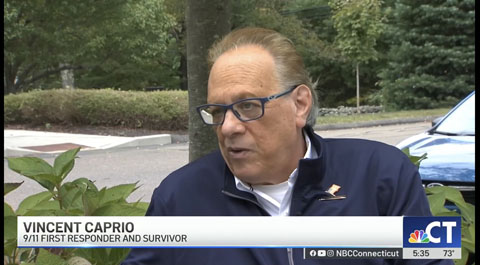
According to CDC data, there are more than 1,500 people in Connecticut who are enrolled in the World Trade Center Health Program.
It’s a federal program that was established in 2011, and it covers funding for people with 9/11-related illnesses. Nationwide, data from the CDC shows over $342 million of medical claims were approved by the program in the past year.
Senator Richard Blumenthal (D-Conn.) and other Democratic lawmakers in the tristate area are expressing their concern about the speed, staffing and funding of the program.
The lawmakers sent a letter to Health and Human Services Secretary Robert F. Kennedy this month, seeking an update on an apparent delay to certify more illnesses and questioning the efficiency, communication and staffing of the program.
“This delay in the core work of the WTCHP also calls into question whether there are other elements of the program that are not being completed…Dismantling the work of WTCHP puts heroic 9/11 responders’ lives at risk,” the letter reads in part.
“They deserve the benefits they were promised. Now the administration is trying to cut the staff and some of the benefits,” Blumenthal said in an interview.
We reached out to the U.S. Department of Health and Human Services.
“The World Trade Center (WTC) Health Program’s Clinical Centers of Excellence and Nationwide Provider Network are continuing to provide services to Program members at this time. The program continues to accept and review new enrollment applications and certification requests,” a spokesperson said in a statement to NBC Connecticut.
The lawmakers requested an answer by Oct. 10. Blumenthal’s office tells us they have not yet heard back.
“You live with it every single day,” said Vincent Caprio, an Easton resident who is a 9/11 first responder and survivor.
He was at a conference at the World Trade Center Marriott on that fateful day 24 years ago. He saw the first plane hit and contributed a total of 400 hours as an EMT at Ground Zero in the days that followed.
“I didn’t get ill until 2017, 16 years after 9/11,” Caprio said. “I was really surprised how many there were of us that had gotten sick 15, 16 years later.”
He has five health conditions certified through the World Trade Center Health Program, including thyroid cancer and PTSD. He said he’s thankful his expenses are covered, but it’s a challenge to navigate.
“It took me thousands of hours to get certified in my 9/11 health conditions,” Caprio said. “A lot of people, they don’t have the persistence and the patience to be able to do this.”
He said the reality feels especially poignant this time of year, where 9/11 first responders, survivors and victims are honored.
“That’s wonderful to be validated. But, then when you get home, you’re on the phone for 20 hours a week,” he said.
Michael Barasch, an attorney who represents nearly 2,000 Connecticut 9/11 survivors and is an advocate for more funding for the program, said wait times have only increased.
He said the wait time can be the difference between catching a diagnosis in its early stages or not.
“There’s such a shortage now. It makes the difference between getting an appointment with the health program in two months versus six months,” Barasch said. “The victims include all the people who did their duty, whether they were first responders or they were just doing their duty and returning to work.”
Today we will be having our NanoBusiness Commercialization Association (NanoBCA)/WIAF webinar. We will be discussing the State of the Water Industry 2025 with our distinguished guest Alan Hinchman, Chief Revenue Officer at GrayMatter Systems.
NanoBCA/WIAF Webinar
Wednesday, September 24, 2025
2PM ET
Join Zoom Meeting
https://us06web.zoom.us/j/88546280968
Please mute your line if you are not speaking. Thank you.
————————————————————
AGENDA
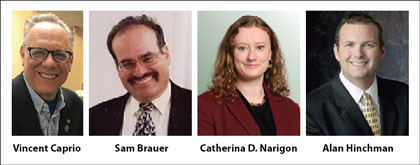
2:00 Opening Remarks
Vincent Caprio
Executive Director
NanoBusiness Commercialization Association (NanoBCA)
vincentcaprio@nynanobusiness.org
Trump administration to add $100,000 fee for H-1B visas
CBS News
Patients Will Wait Longer:’ $100,000 Visa Fee Risks Worsening Doctor Shortage
Bloomberg
2:00-2:10 Congressional Report on COVID-19
Sam Brauer, PhD
Founder & Principal
Nanotech Plus
sbrauer@nano-biz.com
————————————————————
2:10-2:20 EHS Update
Catherina D. Narigon
Associate
Bergeson & Campbell, P.C.
cnarigon@lawbc.com
EPA’s Spring 2025 Unified Agenda Includes PFAS Rulemakings
TSCA Reform — Nine Years Later: Plastics Production, Use, and Recycling – Key TSCA Considerations
TSCA Reform — Nine Years Later: Risk Management Session
Nominations of Peer Reviewers for EPA’s Risk Evaluation of D4 Are Due September 25, 2025
ISO Publishes Standards for Graphene-Related 2D Materials
————————————————————
2:20-2:50 State of the Water Industry
Alan Hinchman
Chief Revenue Officer
GrayMatter Systems
ahinchman@graymattersystems.com
————————————————————
2:50-3:00 Q&A
————————————————————
3:00 Conclusion
————————————————————
Our monthly webinars address topics involving the relationship between the science of nanotechnology and Environmental, Health & Safety (EHS), US Legislation, Education, Finance, Manufacturing and Foreign Policy. One of the benefits of NanoBCA membership is access to our previous webinars with America’s leading scientists and engineers.
Easton resident Vincent Caprio, an EMT trained by the FBI, became a 9/11 first responder while attending a conference at the World Trade Center. He logged more than 400 hours at Ground Zero and was recently honored by Sen. Richard Blumenthal (D-CT) for his service and ongoing advocacy for survivors. As a result of his work, Caprio has five certified medical conditions.
Listen to the interview with Ann Karrick, WSHU Morning Edition Host
9/11 First Responder & Advocate Reflects on Survivors’ Struggles
Senator Richard Blumenthal with Vincent Caprio in Easton CT

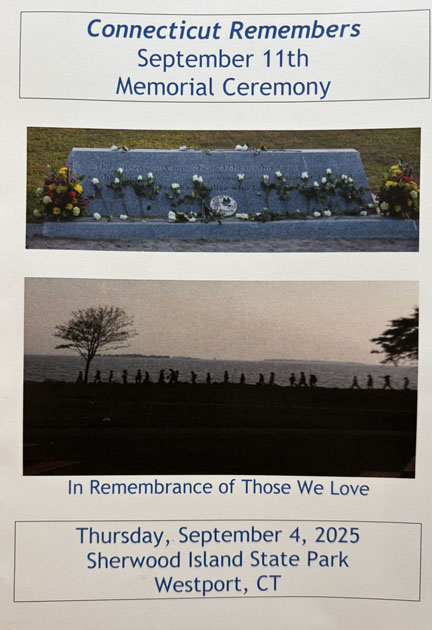
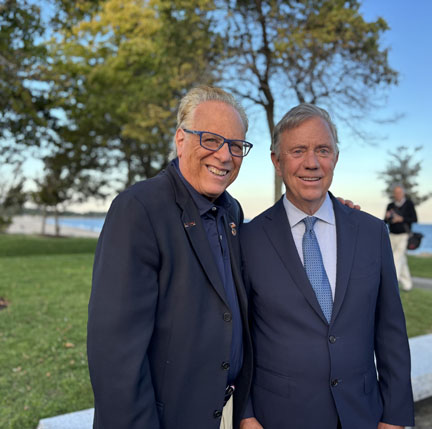
Vincent Caprio & CT Governor Ned Lamont
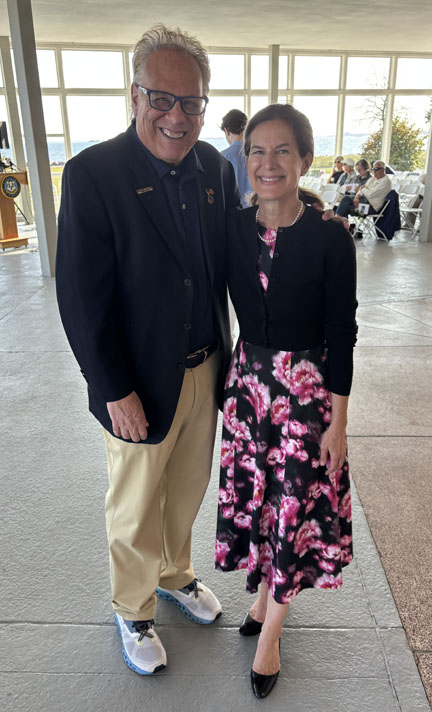
Vincent Caprio & CT Lt. Governor Susan Bysiewicz
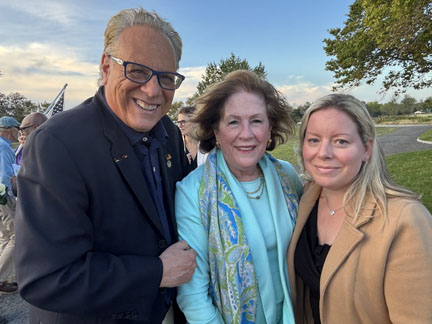
Vincent Caprio, Mary Fetchet & Bonnie C. Rumilly, LCSW, EMT-B